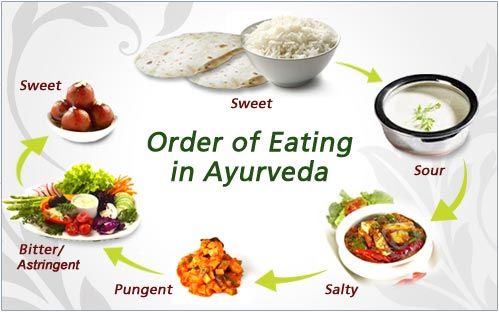
As an ancient system of healing, Ayurveda, the sister science to Yoga, examines ways in which to preserve our health, and every individual is seen as unique and there is no diet or lifestyle routine that works for everyone. Centered around the five elements, Ayurveda seeks to maintain a balanced mind-body state, and instead of healing, the focus is on prevention, with specific advice and guidance on how to maintain physical and emotional health. Meaning food and lifestyle routines are considered the most important medicine, and you are more likely to leave an Ayurvedic doctor with a recipe than with a prescription for pills.
By creating an environment for healing and wellness to exist, it is important to feed the body the nutrients that will enhance and support the body functions. Most have heard that a healthy diet is a colorful diet. Ayurveda is no different. The more colorful the more nutritious, however, an Ayurvedic diet also consists of six tastes which are sweet, salty, sour, pungent, bitter, and astringent. Ideally these would be included in each meal. . The Ayurvedic diet is guided by the philosophy that the body, when nourished and satisfied, will no longer be driven to snack, thus is built upon ten simple rules to help ensure that you make the most of your daily meal, with guidelines for what, how much, and even how to eat.
Each of these ancient Ayurvedic rules will help you remain healthy not only by virtue of the food you are eating but how you eat it.
-
Select foods based on your Dosha type.
-
Eliminate snacks.
-
Eat until satisfied, not full.
-
Consume whole, fresh foods.
-
Include all six tastes at every meal.
-
Reduce ice cold foods and beverages.
-
Eliminate distractions while eating.
-
Stop eating three hours before bedtime.
-
Favor herbal teas between meals.
-
Eat your largest meal of the day at lunchtime.

